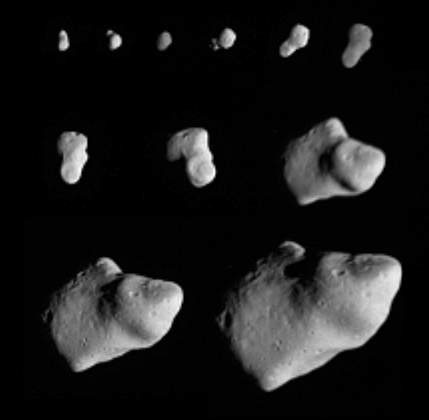

Gaspra:
Gaspra was discovered by Grigoriy N. Neujamin in 1916. Gaspra was imaged by the Galileo spacecraft and found to have an elongated shape with a rotational period of 7.04 hours.
As Galileo approached Gaspra, it produced a mosaic of images (shown below) that were used to determine that it is an irregular body with dimensions of about 20 x 12 x 11 km. Its surface reflects approximately 20 percent of the sunlight striking it. Gaspra is classified as an S-type asteroid and is likely composed of metal-rich silicates and perhaps blocks of pure metal.

Several craters are visible on Gaspra, but none approach the scale of the asteroid's radius. The fact that Gaspra is irregular in shape and lacks any large craters suggests that it has a comparatively recent origin, most likely from the collisional breakup of a larger body. Gaspra has probably been in its present state for the last 300 to 500 million years.